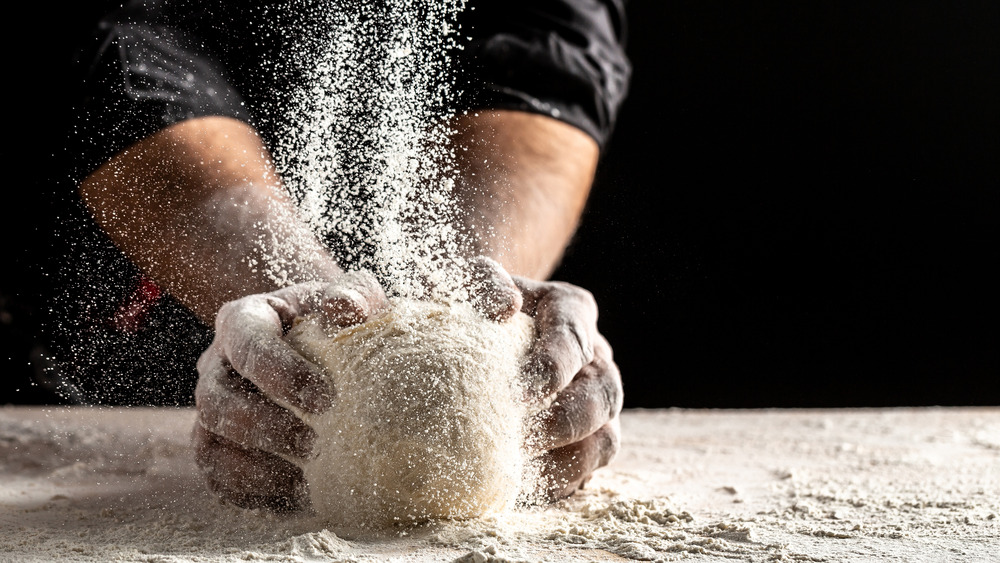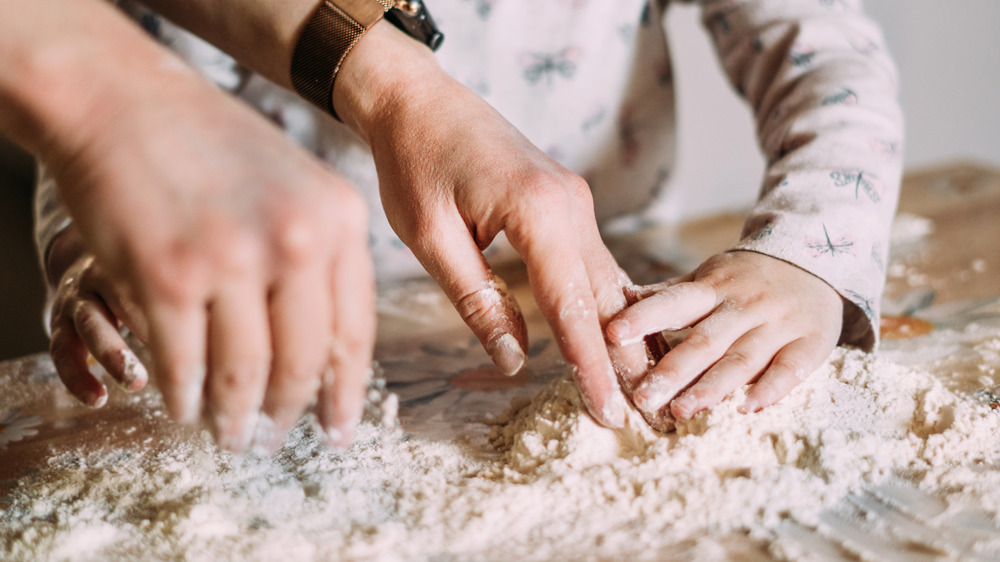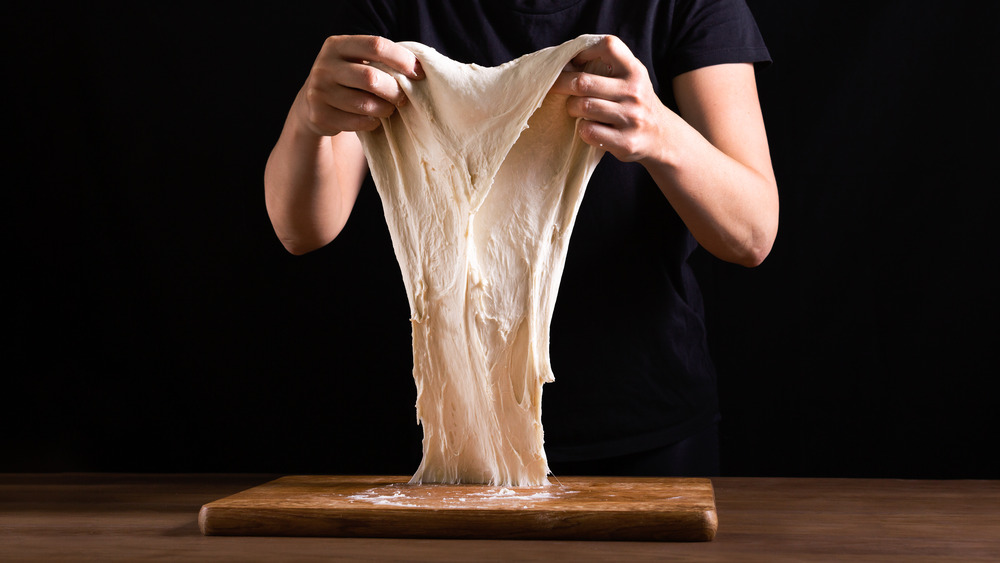You've Been Kneading Bread All Wrong This Whole Time
Bread is an ancient food that some historians believe could have originated as far as 22,000 years ago, when humans were grinding down barley grains to create "flat cakes," according to Live Science. Ancient Egyptians evolved the bread-making process in 1000 B.C. by adding yeast to dough for the first time, which resulted in the first risen sourdough loaves. However, while the addition of yeast was a crucial discovery for creating a well-risen roll — setting it apart from the barley grain flat cakes made tens of thousands of years ago — the sugar-eating microorganism can't successfully lift the dough unless the dough has been properly kneaded as well (via Fine Cooking).
Apart from adding yeast, kneading is a crucial step in the bread-making process if your goal is to create a pillowy loaf layered with the pockets of air responsible for giving bread a slight chew and silkiness when eaten (via The Spruce Eats). The importance of kneading comes down to the two proteins found in flour that combine to create gluten.
When the dough is first mixed together, the gluten-forming proteins are scattered randomly throughout the mixture in no particular pattern. Kneading the dough helps align the jumbled proteins to create more linear strands of gluten throughout, which then trap the gasses created by yeast as it metabolizes the sugars within the mixture, collectively creating the voluminous pockets of air that are found in a fluffy piece of bread. According to chef Samuel Fromartz, however, you may be kneading incorrectly.
Use your fingertips, not your palm
According to Taste of Home, most kneading techniques call for "turning out" the dough, which means removing it from the bowl it was mixed in and onto a floured surface. This technique involves pushing down on the dough with the heel of your hand and pressing it out and away from you, repeating the same action after folding the dough onto itself and turning the dough 45 degrees with each new knead (via The Spruce Eats). In a method Samuel Fromartz shared with The Food Network, Fromartz recommends an entirely different process that involves less mess on your hands and countertops.
Instead of rolling the dough between your palm and a countertop, Fromartz advises bread-makers to knead the dough inside the bowl it was initially formed in, using your fingertips instead of the heel of your palm to knead. Keeping one hand on the edge of the bowl, which allows for stability and guarantees at least one clean hand, fold over and knead the dough with your fingertips. "Don't get the palm in," Fromartz advises. Instead, he recommends using your clean hand to turn the bowl periodically while continuously pressing down and folding the dough with the fingertips of your other hand.
After the dough has been thoroughly kneaded in the bowl, Fromartz suggests turning it out onto a lightly floured surface to shape into loaves and allow them to proof once more before being baked to crusty and silky perfection in a hot oven.
How to know when your dough is fully kneaded
You'll know the dough is kneaded if it has a smooth texture all over, and if the glutenous mixture springs back when you press a finger into it instead of remaining indented (via Taste of Home). To test if your dough is sufficiently kneaded, you can try the "windowpane test," which involves stretching a golf ball-sized piece of dough between your fingers. If the dough stretches without breaking, it is kneaded (via The Spruce Eats).
Conversely, you'll know that your dough is over-kneaded if it resists being stretched at all, according to Taste of Home. This can sometimes happen if you use a stand mixer or a food processor to combine your bread dough. Tough, over kneaded dough will make for a tough loaf.
If you're kneading by hand and worried about overdoing it, just continue to be aware of how the dough feels on your hands. If you feel like the dough is becoming difficult to knead or manipulate, you are likely reaching the end of the kneading process.


